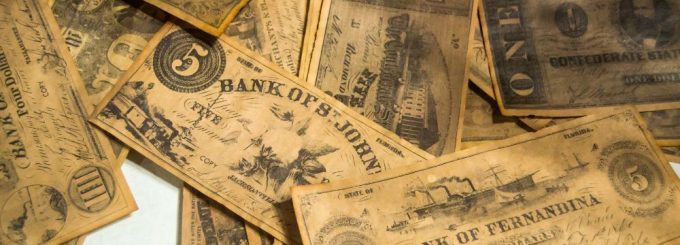Currency Spotlight: Series of 1917 $1 Legal Tender Note Red Seal Sawhorse

The Series of 1917 $1 Saw Horse is the final design of its type, and is distinctive for its red colored seal. Five variants exist in total, most of which are quite common. The signature from Burke Elliot is a key element.
Currency Highlights
This is a large sized note which was legal tender and features a portrait of President George Washington. Those that look closely will also see the Embarkation of the Pilgrims which is present to the left. It has red colored serial numbers and seal which is why currency enthusiasts nickname it The Sawhorse or Sawhorse Back.
The majority of these notes (99 percent) have a value which ranges from two to three figures. However, specimens which are uncirculated and in impeccable condition have been known to sell for over $200, especially if they contain star symbols. It is also important to check for serial numbers which are low since they also command higher prices.
As time passes the Series of 1917 $1 bill is become rarer. It is roughly fifty percent larger than the currency used by Americans today, and has an ornate and stunning design which reflects a period in U.S. history when its currency was more than just a medium of exchange; it was also an art form. This bill is also notable for being the last to display the popular “sawhorse” which can be seen in the reverse side. It differs from Silver Certificates which at the time used blue seals or the green serial numbers and seals which appeared on the Federal Reserve currency.
Background
Legal Tender Notes are also referred to as U.S. Notes and they circulated alongside other forms of currency during the early part of the twentieth century. Legal Tender Notes first appeared in the American Civil War to help the federal government pay off its debts. Because there wasn’t sufficient gold or silver coins to circulate, the government resorted to using paper money. It was preferred since it weighed less and was easier and safer to transport. When printed this currency displayed the inscription “legal tender” so recipients recognized that it was from the United States government who would fulfill their payment obligations.
The image of President George Washington that appears on the 1917 $1 Sawhorse was taken from the 1796 painting which painter Gilbert Stuart produced, who was one of America’s greatest artists, especially during the 1700s. When the painting was commissioned George Washington was serving his 2nd Presidential term and the vignette to the left shows various details such as the Charles Schussele painting “Columbus Discovery of Land.” The 1917 $1 Sawhorse rear side has the words “United States of America,” along with the image of a carpenter sawhorse. Some green ink was used in the back printing, which led to some calling these notes the greenback.


